
This is a pre and post survey given to staff as a part of the professional development provided to math educators in the area of Geometry.
- Subject:
- Geometry
- Mathematics
- Material Type:
- Self Assessment
- Author:
- Lynn Schaal
- Date Added:
- 05/15/2020

This is a pre and post survey given to staff as a part of the professional development provided to math educators in the area of Geometry.

"The Right Question Institute’s “Why Vote?” Tool is used to foster a strong sense of urgency to vote. Voting is framed as a self-advocacy role students can and will want to play. Whether students can or cannot yet vote, they will:
Understand the connection between specific public services they rely on or issues they care about and the role of elected officials
Name for themselves the importance of voting
Ask questions using the Question Formulation Technique (QFT)
Explore ways (in addition to voting) that people can take action and advocate for public services they rely on or issues they care about
This lesson plan is designed to bring elements of the ‘Why Vote’ Tool into the classroom and can be used in remote, hybrid, or fully in person settings."

This resource allows students to record and track their data for multiple formative and summative assessments related to inferencing.
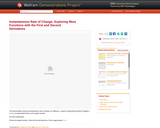
This Demonstration shows the instantaneous rate of change for different x values for polynomial functions of degree 2, 3, or 4, an exponential function, and a logistic function.
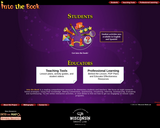
Into the Book is a reading comprehension multimedia resource. Students learn to use reading comprehension strategies including: prior knowledge, making connections, questioning, visualizing, inferring, summarizing, evaluating and synthesizing. This resource includes educational videos, online activities, professional learning videos and teacher tools. Discover more at reading.ecb.org.
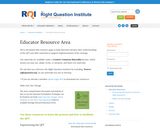
The Question Formulation Technique (QFT) is a simple, but rigorous, step-by-step process designed to help students produce, improve, and strategize on how to improve their questioning techniques. The QFT allows students to practice three thinking abilities in one process: divergent, convergent and metacognitive thinking.
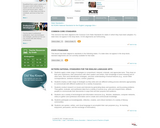
Venn diagrams can be used effectively in kindergarten. Making them user-friendly, hands-on, and developmentally appropriate as a tool and kindergarten students can use venn diagrams with ease. Students are guided toward an understanding of the Venn diagram by physically sorting items into hula hoops. Students are able to move to an interactive
As they sort objects into unions and sets in this lesson plan, students make their thinking visible through similar "rough-draft" talk. By thinking aloud about their choices in this lesson, students are invited to be storytellers as they explore the connections between mathematics and language.
Students can complete a self-assessment to determine their learning and working collaboratively in a group.
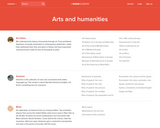
Curriculum and class materials for Music, Art History, History,

These learning targets are written in student language and can be used by both teachers and students to guide student learning. Teachers share the target with their students by telling, showing, and—most important—engaging students in a way that develops their understanding of the concepts and skills that make up the target.
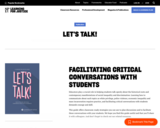
Educators play a crucial role in helping students talk openly about the historical roots and contemporary manifestations of social inequality and discrimination. Learning how to communicate about such topics as white privilege, police violence, economic inequality and mass incarceration requires practice, and facilitating critical conversations with students demands courage and skill.
This guide offers classroom-ready strategies you can use to plan discussions and to facilitate these conversations with your students. Also includes planning documents and resources for further investigation.
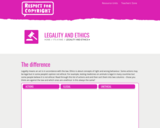
This website is perfect for teaching the difference between legal and ethical behaviors. First, the website provides a brief description about the difference between legal and ethical behaviors. The rest of the website provides interactive activities for students to become familiar with the content. I would recommend just the two exercises titled “the difference” and “legal or ethical” since those are most related to our topic. Students can complete these exercises individually, and then as a collaborative activity, students can discuss their answers with a partner. The goal of this activity is for students to be able to distinguish between legal behavior and ethical behavior, provide examples of the two, and explain the differences.

Lesson Plan One: Color in 3-D: A Nature Design Project by Peggy Reeves is a lesson for 6-12 graders, Middle/High School designed to take between 3-4 45 minute class periods.
Students should have prior experience/knowledge of color theory, 2-dimensional shape, 3-dimensional form, Cubism, and Fauvism.
http://www.pbs.org/hanshofmann/
Once in the main web-site, follow the Special Features link to three choices: 1) Push and Pull Puzzle, which is an interactive color painting 2) Texturexploration, featuring a magnifying glass to examine the textural surfaces of a Hans Hofmann painting 3) Hofmannopoly, a reproducable board game which explores Hans Hofmann's artistic career and his personal philosophy of art.
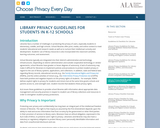
Article and checklist from the American Library Association's Choose Privacy Every Day campaign.
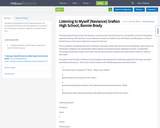
The goal of using Naviance with 7th grade students is to encourage self-relianance and self-awareness as a result of the ACP process, this lesson’s objective is relevant to that end.

These rubrics can be used when students are working in literature circle groups to assess their collaboration and public speaking skills. There is one rubric for the teacher to assess student preparedness and contribution to the group as well as speaking and listening skills. Another rubric has been adapted to allow for students to peer-assess and self-assess at the end of a literature circle cycle. The rubrics provide clear expectations for group collaboration aligned to the Common Core State Standards for Speaking & Listening.

This is a project that the students can create either manually or using an online MEME generator. By completing this project students demonstrate their understanding of the course content by applying it to their MEME. Students have fun creating this and can make it personal or goofy. (I did my car for my example)
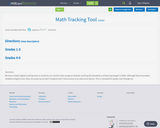
We have created digital tracking tools so students can monitor their progress towards reaching the standards and learning targets in Math. Although these have been created as digital tools, they can easily be printed if students don’t have access to an electronic device. This is intended for grades one through six.
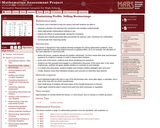
This lesson is designed to help students develop strategies for solving optimization problems. Such problems typically involve using limited resources to greatest effect, as in, for example, the allocation of time and materials to maximize profit.
Before the lesson, students attempt the problem individually. You then review their work and formulate questions for students to answer in order to improve their solutions.At the start of the lesson, students work alone answering your questions.Students are then grouped and engage in a collaborative discussion of the same task. In the same small groups, students are given sample solutions to comment on and evaluate.In a whole-class discussion, students explain and compare solution strategies seen and used.Finally, students revise their individual solutions and comment on what they have learned.
Materials required
Each individual student will need a copy of the task, some plain paper, a calculator, and a copy of the How Did You Work? questionnaire.Each small group of students will need copies of the Sample Responses to Discuss.Graph paper should be kept in reserve and used only when necessary or requested.
Time needed
Approximately 15 minutes before the lesson, a 1-hour lesson, and 10 minutes in a follow-up lesson.
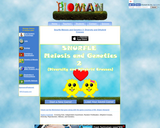
This online interactive website chalk full of games and simulations cover all of the following topics:
Crossing Over, Independent Assortment, Random Fertilization, Dihybrid Crosses, Diversity, Reproduction, Meiosis, and Genetics.
This is a perfect tutorial/game based/simulation driven online resource for teaching, re-teaching, or reviewing the basics behind the meiosis, independent assortment, crossing over and dihybrid crosses.